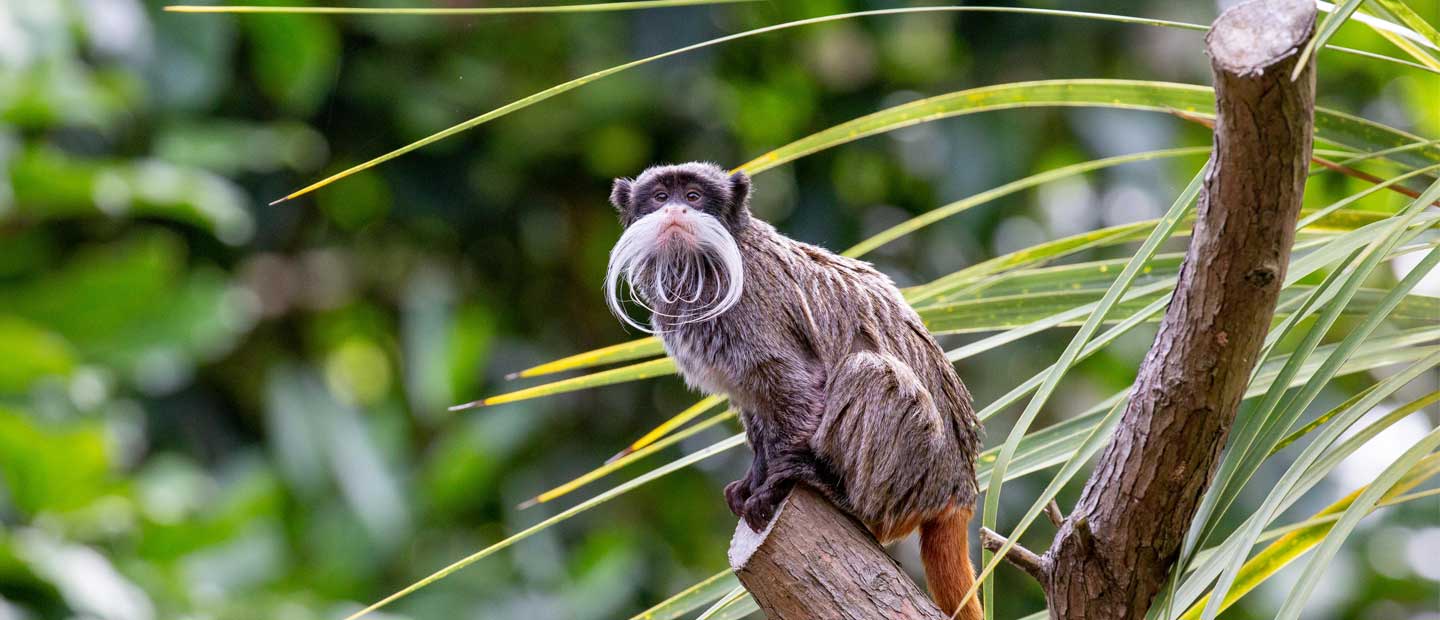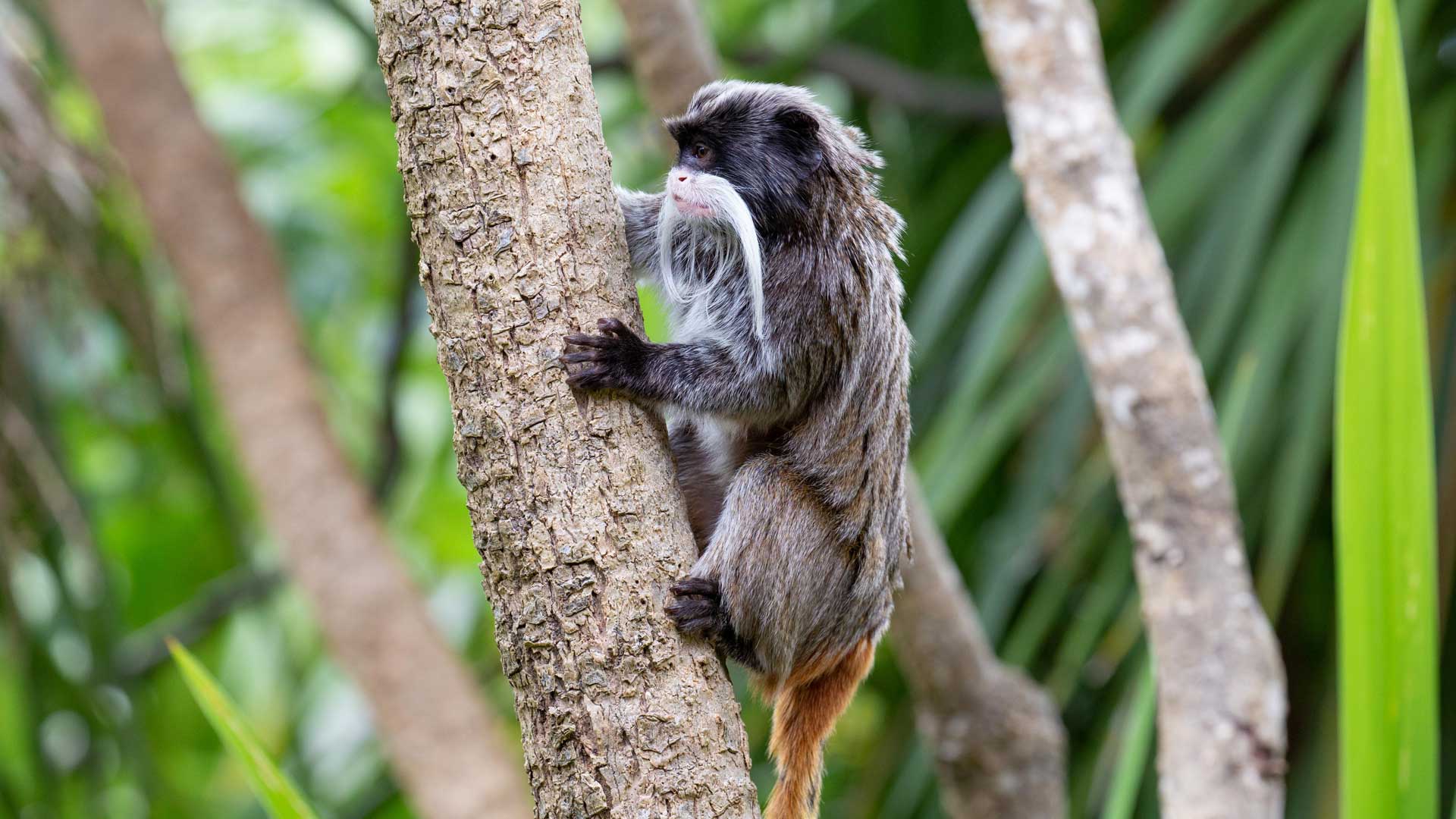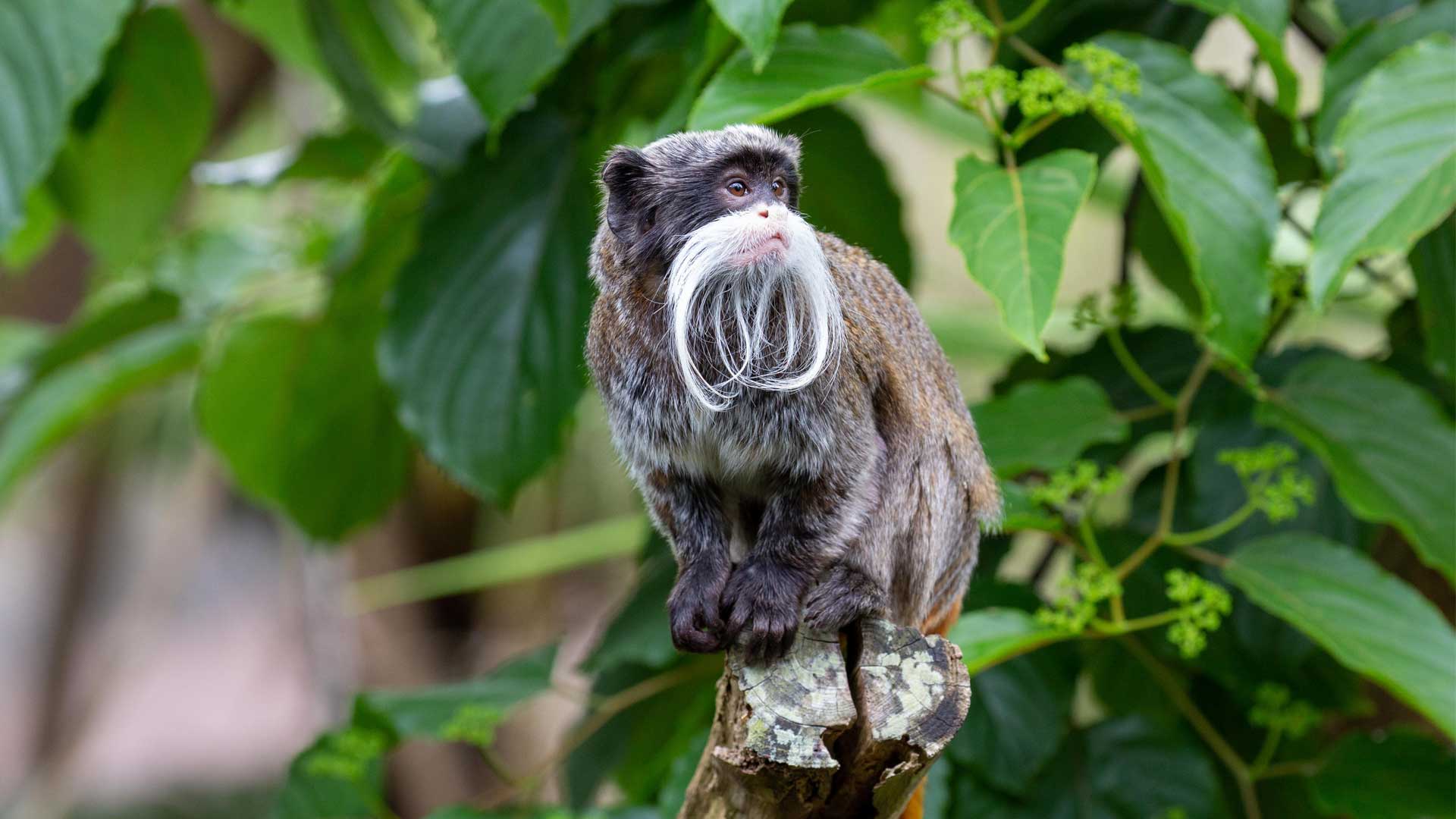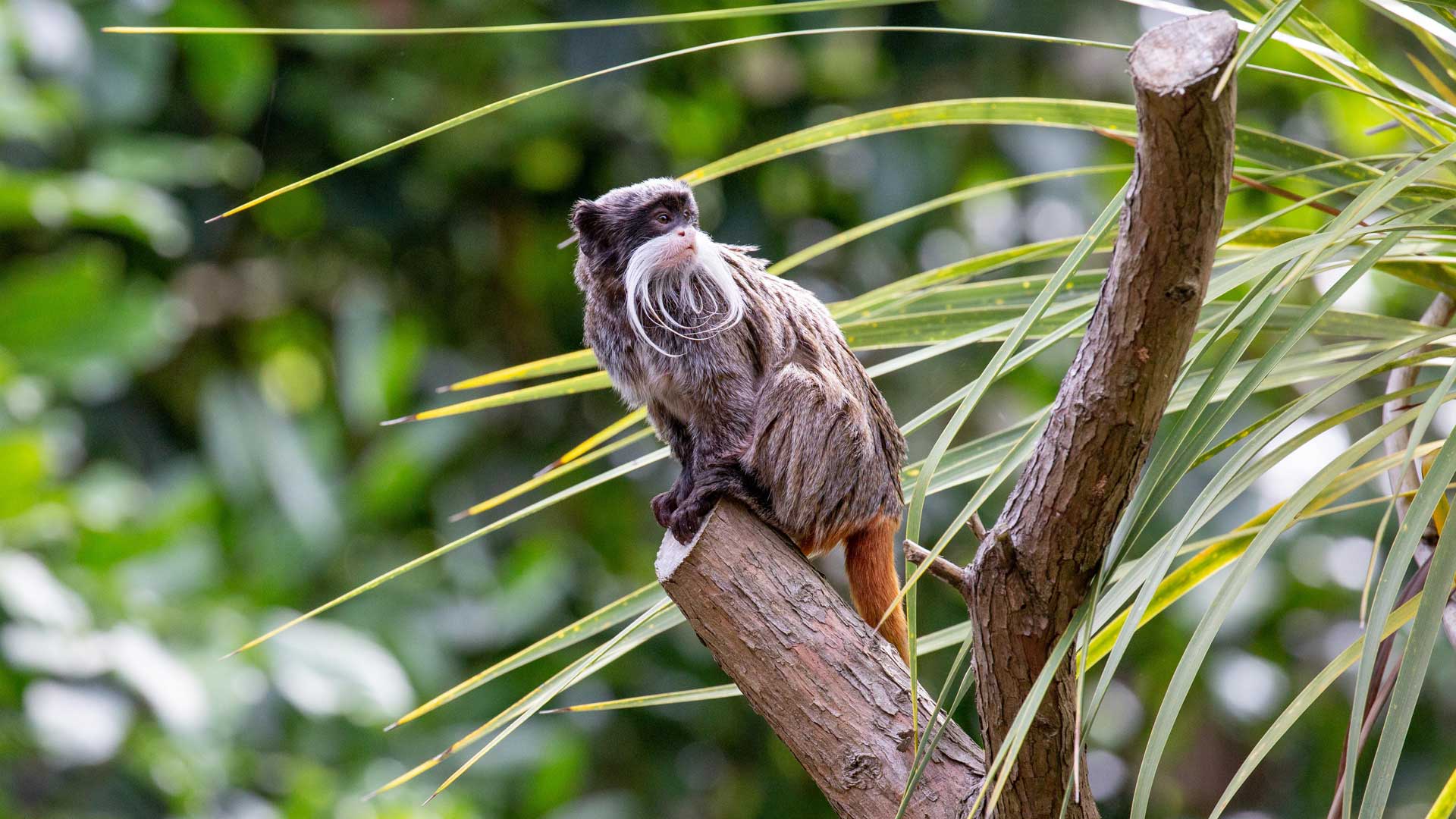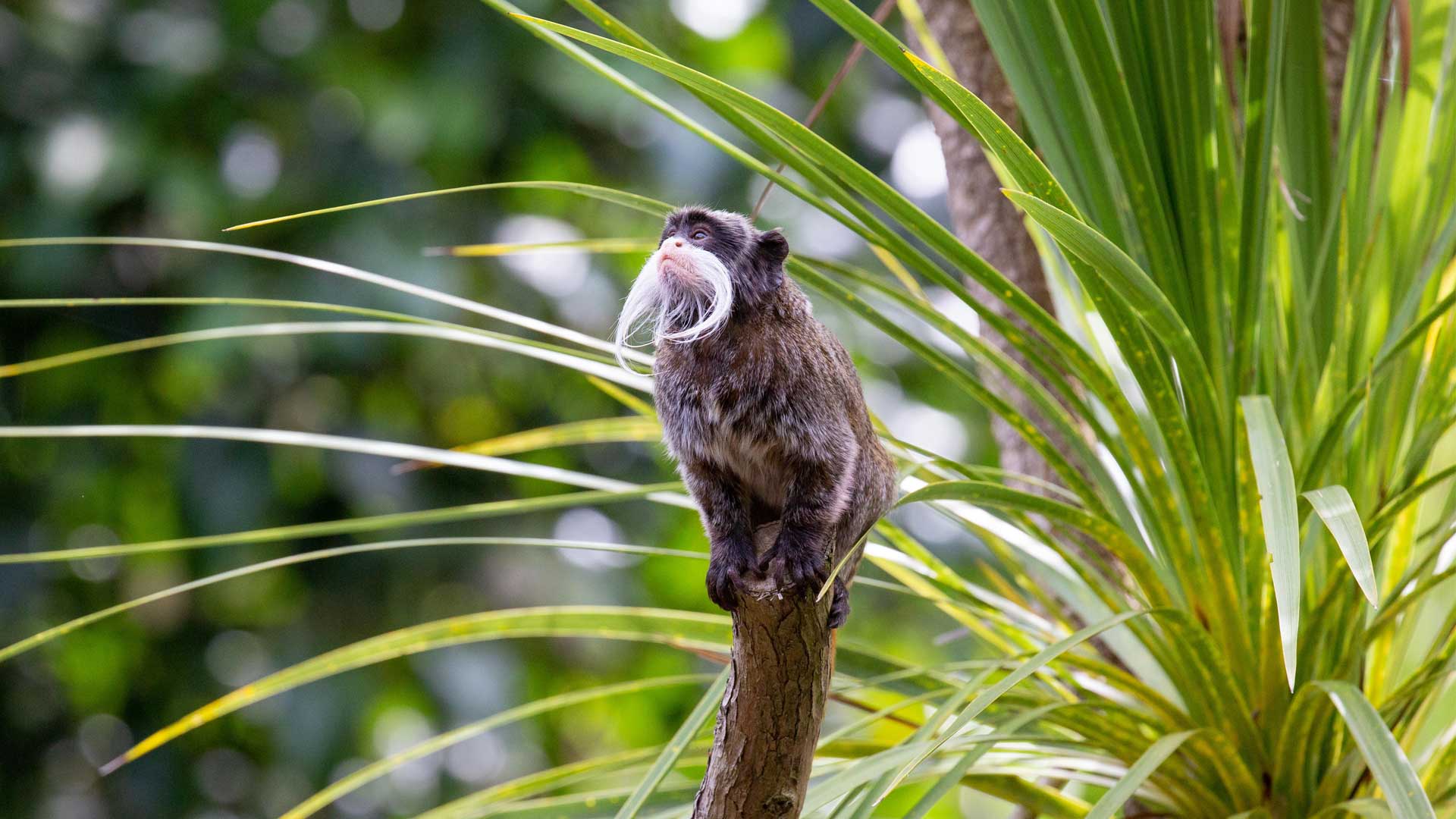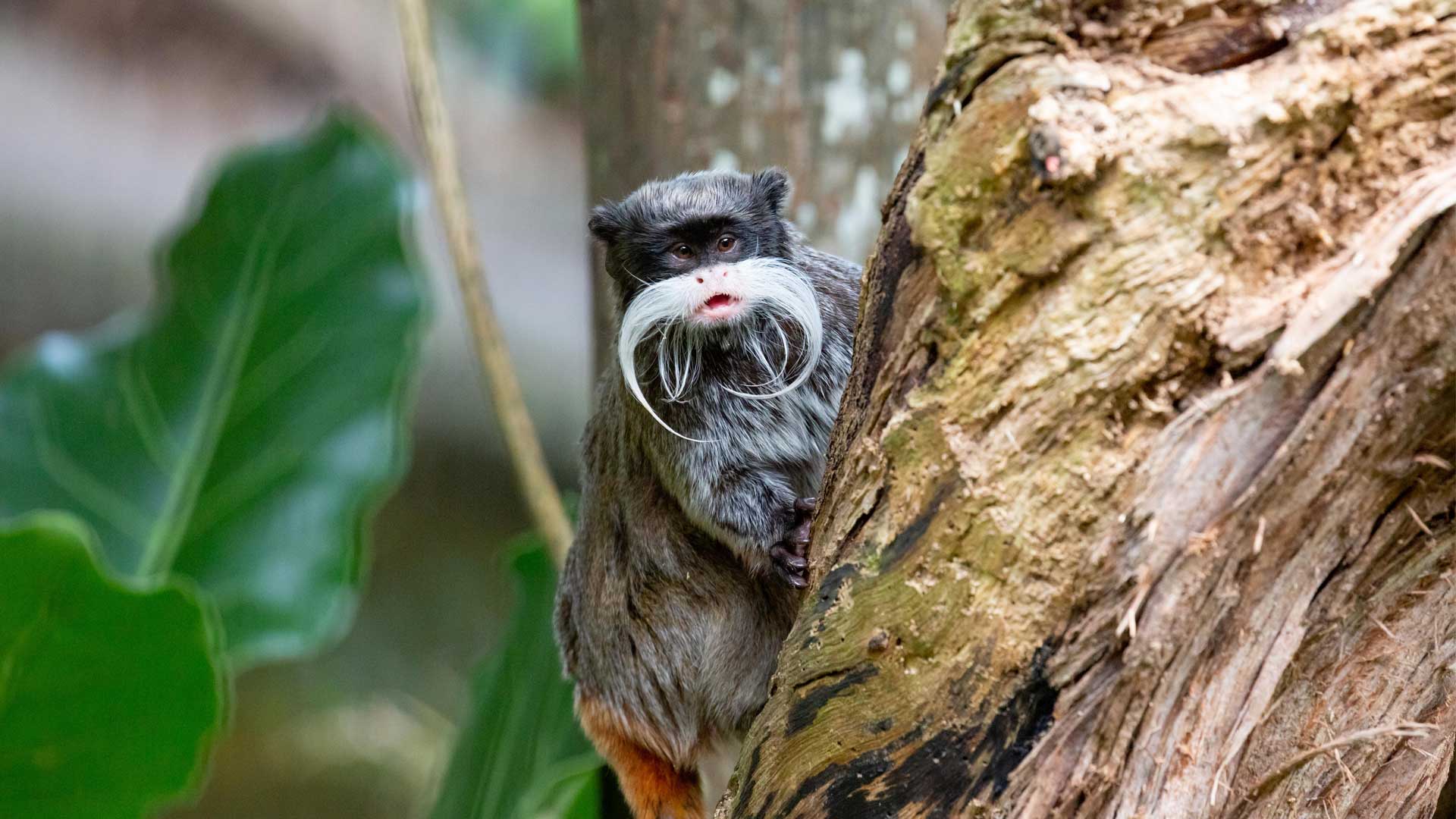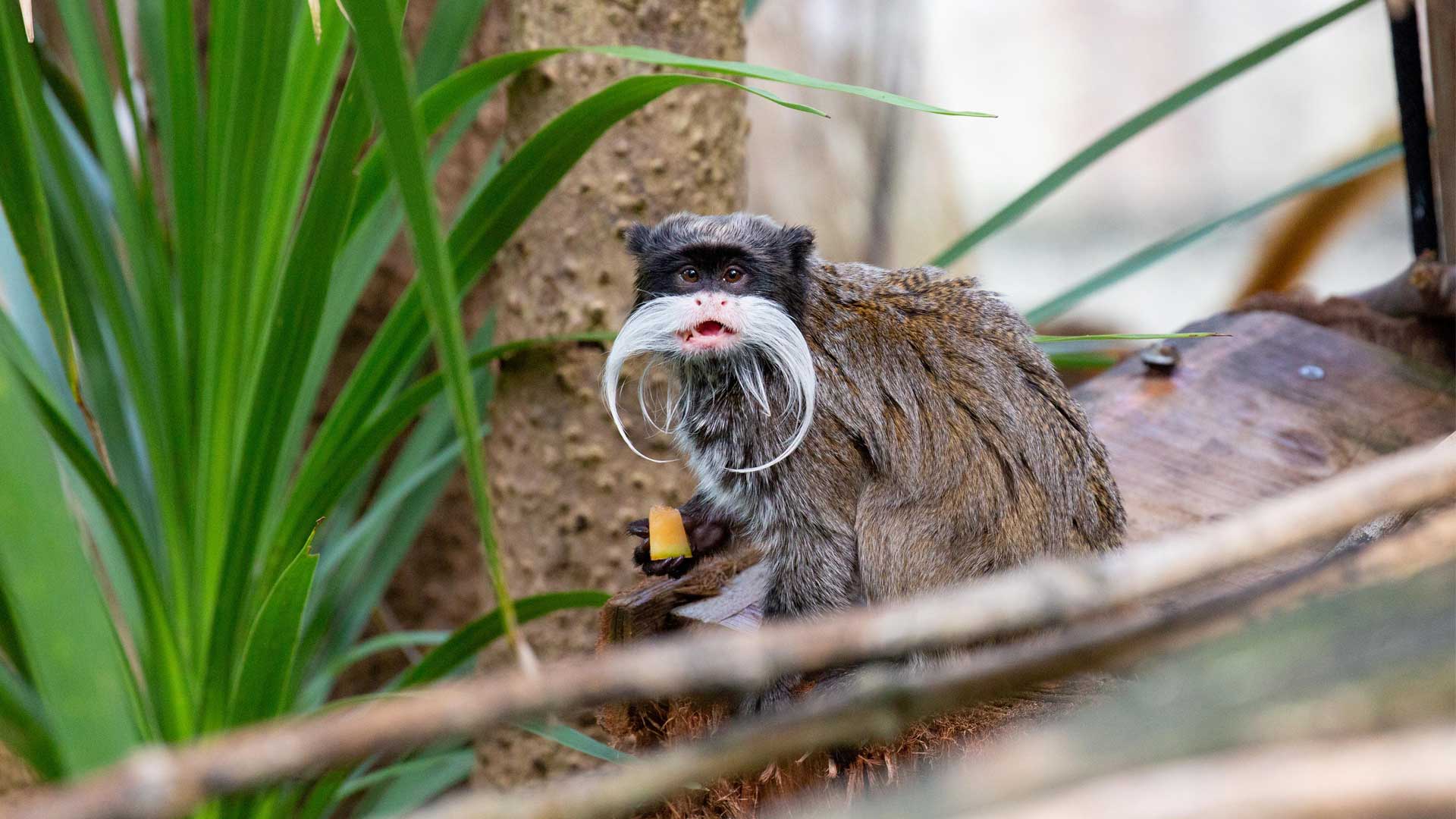What’s for lunch?
Emperor tamarins are omnivorous, and mostly eat fruits, vegetables, nectar, and insects. Sometimes our primate team will give them hibiscus flowers, which they love to eat the pollen from. Emperor tamarins use their long, narrow fingers to reach into the flower to get the food within.
When a baby tamarin is born, it feeds every 2-3 hours from its mother. After around 3 months, it will wean off milk and begin to eat solid foods. By watching their parents and siblings eat at mealtimes, baby tamarins learn how to eat solid foods, such as locusts and other insects.
Emperor tamarins can see blue and green colours, but 60% of females can also recognise red. Seeing colours is helpful for spotting predators, but being able to see red helps them decide which fruit is ripe enough to eat.


